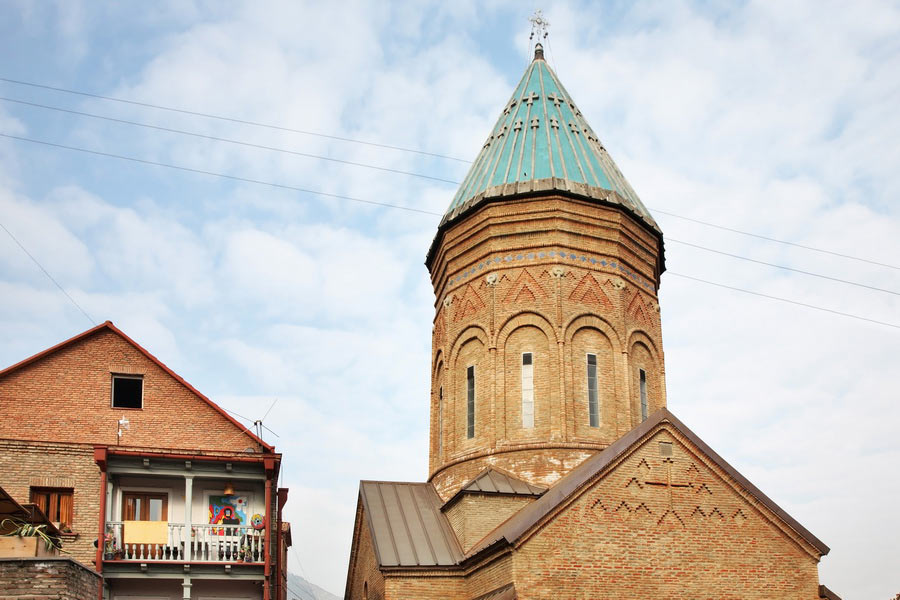
Saint George’s Church (Surb Gevorg) is a beautiful domed, brick chapel in Tbilisi which serves as the diocese of the national Armenian Apostolic Church in Georgia and the main cathedral for the sizable Armenian community which resides in the capital. The iconic cathedral has witnessed many hardships and acts of bravery, and travelers who wish to learn more about Christianity and the history of Armenians in Georgia will not want to miss this historic church.
The original church was built in 1251 by Umek, an Armenian merchant from Tbilisi. During the invasion of Shah Abbas I in 1616, it was converted into a Persian garrison, a function which it retained until 1748 when King Erekle II returned the building to the Armenian Apostolic Church. During the invasion of Agha Mohammad Khan Qajar in 1795, the church was set ablaze from the inside, but miraculously its exterior remained intact. During the 19th-20th centuries it was renovated several times, although complete restoration was not carried out until 2012-2015, at which time donations from the local community, public figures and Armenian and Georgian businessmen helped to fund the massive undertaking.
Saint George’s Church has two entrances and stands on an elevated platform, with a stone staircase leading up to it from the street. Inside are frescoes created by the Ovatanyan family and a 19th-century iconostasis, while a fragment of a 13th-century cross-stone khachkar inscribed in Arabic is embedded in the chapel’s northern wall. To the right of the main entrance is the tomb of the famous Armenian poet Sayat-Nova, a native of Tbilisi, as well as the graves of many other Armenian public figures.
Saint George’s Church in Tbilisi is situated in the city center at Samghebro Street #5, located near Vakhtang Gorgasali Square.

